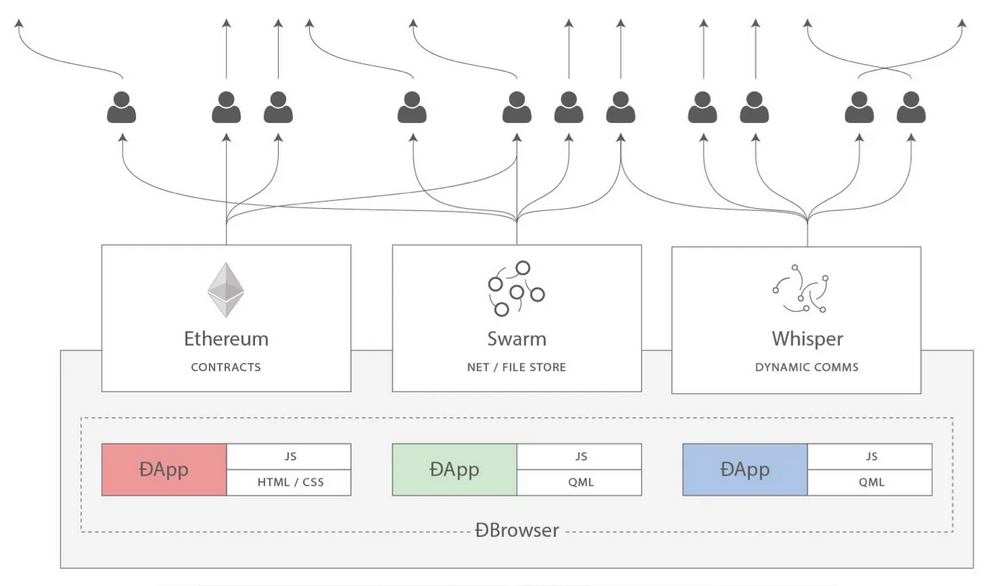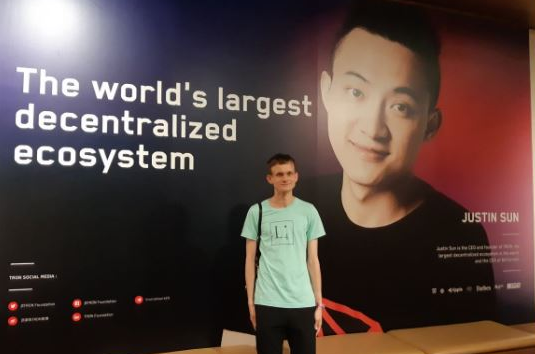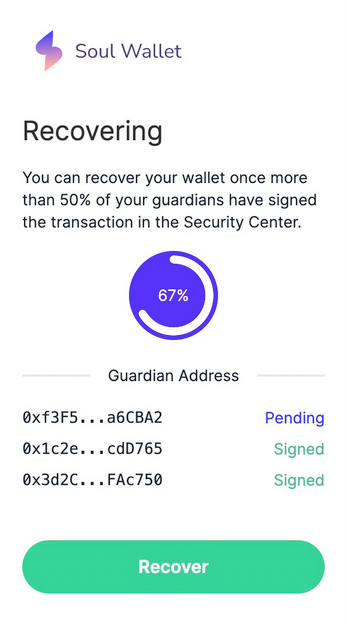Vitalik: Reigniting the Cypherpunk Spirit of Ethereum
Author: Vitalik Buterin
Compiled by: Deep Tide TechFlow
On the 29th, Ethereum founder Vitalik Buterin published a new article titled "Make Ethereum Cypherpunk Again," discussing how the Ethereum community can return to the ideals of cypherpunk. The author reflects on the development of the Ethereum ecosystem over the past decade and points out that the vision of consumer crypto payments has gradually faded due to rising transaction fees.
Deep Tide TechFlow has compiled the full text.
One of my favorite memories from ten years ago is a pilgrimage to a neighborhood in Berlin known as the Bitcoin District: it was an area in Kreuzberg with about a dozen shops that accepted Bitcoin payments. The center of this community was Room 77, a restaurant and bar run by Joerg Platzer. In addition to accepting Bitcoin payments, it served as a community hub where various open-source developers, political activists, and others frequently gathered.

A similar memory from two months ago is PorcFest, a libertarian gathering in the northern forests of New Hampshire, where meals were primarily served at small restaurants like "Revolution Coffee" and "Incendiary Soup, Salads, and Smoothies," which of course also accepted Bitcoin payments. Here, discussions about the deeper political significance of Bitcoin and its use in daily life coexisted harmoniously.
I bring up these memories because they remind me of the deeper vision behind cryptocurrency: our goal is not just to create isolated tools and games, but to comprehensively build a freer and more open society and economy, where different parts, such as technology, society, and economy, are intertwined.
The early vision of "web3" was also of this type, with a similar but slightly different direction. Ethereum co-founder Gavin Wood originally coined the term "web3," referring to different ways of thinking about Ethereum: rather than seeing it as "Bitcoin plus smart contracts" as I initially did, Gavin viewed it more broadly as a part of a set of technologies that could collectively form the foundation of a more open internet stack.

When the free and open-source software movement began in the 1980s and 1990s, the software was simple: it ran on your computer and read and wrote files on your computer. But today, most of our important work is collaborative and often large-scale. Therefore, even if the underlying code of applications is open and free, your data is routed through a centralized server operated by a company that can read your data at will, change the rules, or strip you from the platform at any time. Thus, if we want to extend the spirit of open-source software to today's world, we need programs that can access shared hard drives to store content that multiple people need to modify and access. What is Ethereum, along with sister technologies like peer-to-peer messaging (then Whisper, now Waku) and decentralized file storage (then Swarm, now IPFS)? This is the original vision from which the ubiquitous term "web3" was born.
Unfortunately, since around 2017, these visions have somewhat receded into the background. Few people talk about consumer crypto payments, and the only non-financial application that has seen large-scale on-chain use is ENS. Moreover, there is a significant ideological divide between non-blockchain decentralized communities and the crypto world, with most people in non-blockchain decentralized communities viewing the crypto world as a distraction rather than a kindred spirit and a strong ally. In many countries, people do use cryptocurrencies to send and save funds, but they typically do so through centralized means: either through internal transfers of centralized exchange accounts or by trading USDT on Tron.

Having experienced that era, I believe the fundamental reason for this shift is the rise in transaction fees. When the cost of writing to the chain was $0.001 or even $0.1, people were willing to develop various applications and use the blockchain in many ways, including non-financial ones. But when transaction fees rose above $100, as they did at the peak of the bull market, only a willing audience remained: the Degens, who, in fact, became wealthier due to rising coin prices and were even more willing to speculate. Some speculation is acceptable; I spoke with many people at events who joined the crypto space for financial motives but stayed for ideals. However, when they became the largest group using the blockchain at scale, it changed public perception and the internal culture of the crypto space, leading to many other negative effects we've seen in recent years.
Now, fast forward to 2023. Whether it's the core challenges of scaling or the various "side quests" crucial for building a viable cypherpunk future, we actually have a lot of positive news to showcase:
Rollups are starting to truly exist.
After a temporary stagnation due to regulatory crackdowns on Tornado Cash, second-generation privacy solutions like Railway and Nocturne are seeing the light of day.
Account abstraction is beginning to rise.
Long-forgotten light clients are starting to truly exist.
Zero-knowledge proofs, a technology we thought would take decades to emerge, have now arrived, becoming increasingly developer-friendly and soon available for consumer applications.
These two things: the growing recognition that uncontrolled centralization and excessive financialization are not the essence of cryptocurrency, and the key technologies mentioned above finally maturing, together provide us with an opportunity to steer things in a different direction. That is to say, at least part of the Ethereum ecosystem can truly become the permissionless, decentralized, censorship-resistant, open-source ecosystem we originally built.
What Are These Values?
Many of these values are shared not only by many in the Ethereum community but also by other blockchain communities and even non-blockchain decentralized communities, although each community has different combinations and emphases on these values.
Open global participation: Anyone in the world should be able to participate as a user, observer, or developer, enjoying the greatest degree of equality. Participation should be permissionless.
Decentralization: Minimize reliance on any single actor. In particular, applications should continue to operate even if core developers permanently disappear.
Censorship resistance: Centralized actors should not have the power to interfere with the operation of any specific user or application. Concerns about malicious actors should be addressed at a higher level of the tech stack.
Auditability: Anyone should be able to verify the logic of applications and their ongoing operations (e.g., by running full nodes) to ensure they operate according to the rules claimed by the developers.
Trustless neutrality: The underlying infrastructure should remain neutral and in a way that anyone can see its neutrality even in the absence of trust in the developers.
Build tools, not empires. Feudal empires try to capture users and trap them in walled gardens; tools accomplish their tasks but interoperate with the broader open ecosystem in other ways.
Collaborative mindset: Even in competition, projects within the ecosystem collaborate in sharing software libraries, research, security, community building, and other areas that are universally valuable to them. Projects strive for win-win cooperation between each other and with the broader world.
Within the crypto ecosystem, it is entirely possible to build things that do not adhere to these values. For example, a system called L2 could be built that is, in reality, a highly centralized system protected by multi-signature, with no intention of transitioning to something more secure. One could build an account abstraction system that attempts to be "simpler" than ERC-4337 but at the cost of introducing trust assumptions that ultimately eliminate the possibility of a public mempool and make it harder for new builders to join. An NFT ecosystem could be constructed where the content of NFTs is unnecessarily stored on centralized websites, making it more vulnerable than storing those components on IPFS. One could also build a staking interface that unnecessarily directs users to already large staking pools.
Resisting these pressures is difficult, but if we do not, we risk losing the unique value of the crypto ecosystem and reproducing a clone of the existing web2 ecosystem that is less efficient and has more steps.
"Without Sewers, There Are No Teenage Mutant Ninja Turtles"

In many ways, the crypto space is a ruthless environment. Dan Robinson and Georgios Konstantopoulos vividly expressed this in a 2021 article, discussing Ethereum as a dark forest in the context of MEV, where on-chain traders constantly face the risk of being exploited by front-running bots, which themselves are also vulnerable to being exploited by other bots. This is true in other respects as well: smart contracts are often hacked, user wallets are frequently compromised, and the failures of centralized exchanges are catastrophic.
This poses a huge challenge for users in the space, but it also provides an opportunity: it means we have a space to truly experiment, incubate, and rapidly receive on-the-ground feedback about various security technologies to address these challenges. We have seen successful responses to challenges in different contexts:
Problems and Solutions:
Centralized exchanges getting hacked: Use decentralized exchanges with stablecoins, so you only need to trust centralized entities to handle fiat.
Personal private keys are not secure: Smart contract wallets: multi-signature, social recovery, etc.
Users are tricked into signing transactions, draining funds: Wallets like Rabby show users the simulated results of transactions.
Users are subjected to sandwich attacks from MEV players: Cowswap, Flashbots Protect, MEV interceptors…
Everyone wants the internet to be secure. Some try to achieve this by pushing for a forced reliance on a single participant (whether a company or government) that can serve as a centralized anchor for security and truth. But these approaches sacrifice openness and freedom and contribute to the growing tragedy of the "splintered web." People in the crypto space highly value openness and freedom. The high risks and significant financial incentives mean that the crypto space cannot overlook security, but for various ideological and structural reasons, it cannot adopt centralized approaches to achieve security. Meanwhile, the cryptocurrency field is at the forefront of very powerful technologies, such as zero-knowledge proofs, formal verification, hardware-based key security, and on-chain social graphs. These facts together mean that the open way to enhance security for cryptocurrencies is the only way.
All of this means that the crypto world is a perfect testing platform environment to adopt its open and decentralized security approaches and apply them practically in real high-risk environments, maturing to the point where parts of it can be applied. This is one of my visions: how the idealistic part of the crypto world and the chaotic part of the crypto world, as well as the entire crypto world and the broader mainstream, can transform their differences into symbiosis rather than exacerbate tensions between the two.
Ethereum as Part of a Broader Technological Vision
In 2014, Gavin Wood launched Ethereum as one of a set of tools to build with, the other two being Whisper (decentralized messaging) and Swarm (decentralized storage). The former received a lot of attention, but unfortunately, as the focus shifted to financialization around 2017, the latter received significantly less attention. Nevertheless, Whisper continues to exist in the form of Waku and is actively used by projects like decentralized communication Status. Swarm continues to develop, and now we also have IPFS for hosting and serving this blog.
In recent years, with the rise of decentralized social media (Lens, Farcaster, etc.), we have the opportunity to revisit some of these tools. Additionally, we have another very powerful new tool to add to the trio: zero-knowledge proofs. These technologies are most widely used as a means to enhance Ethereum's scalability, such as ZK rollups, but they are also very useful for privacy. In particular, the programmability of zero-knowledge proofs means we can move beyond the false dichotomy of "anonymous but risky" and "KYC'd so safe," achieving both privacy and multiple forms of verification simultaneously.
Zupass in 2023 is an example. Zupass is a zero-knowledge proof-based system incubated at Zuzalu, used for on-site identity verification for events and online identity verification for voting systems like Zupoll and Twitter-like Zucast. The key feature of Zupass is that you can prove you are a resident of Zuzalu without revealing which member you are. Each Zuzalu resident can only have one randomly generated cryptographic identity for each application instance they log into (e.g., voting). Zupass has been very successful and will be applied to the ticketing service of Devconnect later this year.

So far, the most practical application of Zupass may be voting. Various votes have been conducted, some involving political controversies or highly personal topics, where there is a strong need to protect privacy, using Zupass as an anonymous voting platform.
Here, we can begin to see the outline of the Ethereum cypherpunk world, at least on a purely technical level. We can hold assets in ETH and ERC20 tokens as well as various NFTs and use privacy systems based on stealth addresses and Privacy Pools technology to protect our privacy while preventing known bad actors from benefiting from the same anonymous set. Whether in our DAOs or to help decide changes to the Ethereum protocol, or for any other purpose, we can use zero-knowledge voting systems that can help identify who is eligible to vote and who is not using various credentials. Instead of voting with tokens like in 2017, we can also conduct anonymous votes for those who have made sufficient contributions to the ecosystem or participated in enough events, or one vote per person.
Online and offline payments can be achieved through ultra-low-cost transactions conducted on L2, utilizing data availability space (or off-chain data protected by Plasma) and data compression to provide users with super high scalability. Payments from one rollup to another can be facilitated through decentralized protocols like UniswapX. Decentralized social media projects can use various storage layers to store activities like posts, retweets, and likes, and use ENS (cheap on L2 with CCIP) as usernames. We can achieve seamless integration between on-chain tokens and off-chain proofs held by individuals through systems like Zupass.
Mechanisms like secondary voting, cross-tribal consensus, and prediction markets can be used to help organizations and communities self-manage and stay informed, while blockchain and ZK-proof-based identities can protect these systems from internal centralized censorship and manipulation from external sources. Complex wallets can safeguard people's security when participating in dapps, user interfaces can be published to IPFS and accessed via .eth domain names, and the hashes of HTML, JavaScript, and all software dependencies can be updated on-chain through DAOs. The birth of smart contract wallets is aimed at helping people not lose tens of millions of dollars in cryptocurrency, and it will extend to protect people's "identity roots," creating a system that is more secure than centralized identity providers like "logging in with Google."

In understanding the Ethereum ecosystem (or "web3"), we can view it as an independent technological protocol stack that competes with traditional centralized protocol stacks at various levels. Many people will use both, and there are often clever ways to combine the two: with ZKEmail, you can even make an email address one of the guardians of a social recovery wallet! But at the same time, using different parts of the decentralized stack also has many synergies, especially when these parts are designed to integrate better with each other.

One of the benefits of viewing it as a stack is that it fits well with Ethereum's spirit of diversity. Bitcoin is committed to solving one or at most two or three problems. Ethereum, on the other hand, has many sub-communities with varying focuses. There is no dominant narrative. The goal of the stack is to facilitate this diversity while striving for increasing interoperability between these diversities.
Social Aspects
It is easy to say, "This group doing X is a harmful corrupt force, while those doing Y are the real mainstream." But this is a lazy response. To truly succeed, we need not only the vision of the technological stack but also the social part of the stack that enables the technological stack to build in the first place.
The strength of the Ethereum community lies in the fact that, in principle, we take incentives seriously. PGP aimed to put cryptographic keys in everyone's hands so that we could actually sign and encrypt emails for decades, but it fundamentally failed, and then we got cryptocurrency, suddenly hundreds of millions of people had keys associated with them publicly, and we could start using those keys for other purposes—including returning to the full cycle of encrypted email and messaging. Non-blockchain decentralized projects often suffer from severe funding shortages, while blockchain-based projects can secure $50 million in Series B funding. We get people to stake their ETH to secure the Ethereum network not out of the benevolence of stakeholders but out of their own self-interest—thus we achieve $20 billion in economic security.
At the same time, mere incentives are not enough. DeFi projects often start humbly, cooperatively, and as open-source as possible, but as they scale, they sometimes begin to abandon these ideals. We can incentivize stakeholders to join and maintain very high uptime, but incentivizing stakeholders to decentralize is much more challenging. It may not be feasible to achieve this solely through internal protocol means. Many key parts of the aforementioned "decentralized stack" lack viable business models. The governance of the Ethereum protocol itself is clearly non-financialized—this makes it more robust than other ecosystems that are more financialized in their governance. This is why having a strong social layer in Ethereum is valuable; it vigorously enforces its values in places where pure incentives cannot achieve it—yet it does not create the concept of an "Ethereum Alliance," thus becoming a new form of political correctness.

A balance needs to be struck between these two aspects; rather than balance, it is more about integration. Many people first enter the crypto space out of a desire to get rich, but they subsequently become familiar with the ecosystem and become enthusiastic followers of building a more open and decentralized world.
How do we actually achieve this integration? This is a key question, and I suspect the answer lies not in one but in a combination of a series of technologies obtained through iteration. The Ethereum ecosystem has been more successful than most ecosystems in encouraging a collaborative mindset among L2 projects purely through social means. In particular, large-scale public goods funding from Gitcoin Grants and Optimism's RetroPGF rounds has been extremely helpful, as it creates another revenue stream for developers who do not see any traditional business models, without sacrificing their values. But even these tools are still in their infancy, and there is a long way to go to improve these specific tools and identify and develop other tools that may be better suited for specific problems.
This is where I see the unique value of Ethereum's social layer. There is a unique compromise that values incentives without being consumed by them. Here, there is a unique blend that values a warm and tight-knit community while also remembering that what looks "warm and tight" from the inside can easily appear "oppressive and exclusive" from the outside, and values the hard norms of neutrality, openness, and resistance to censorship as a safeguard against the risks of being overly community-driven. If this combination can work well, it will, in turn, be positioned to realize its vision on both economic and technological levels.










